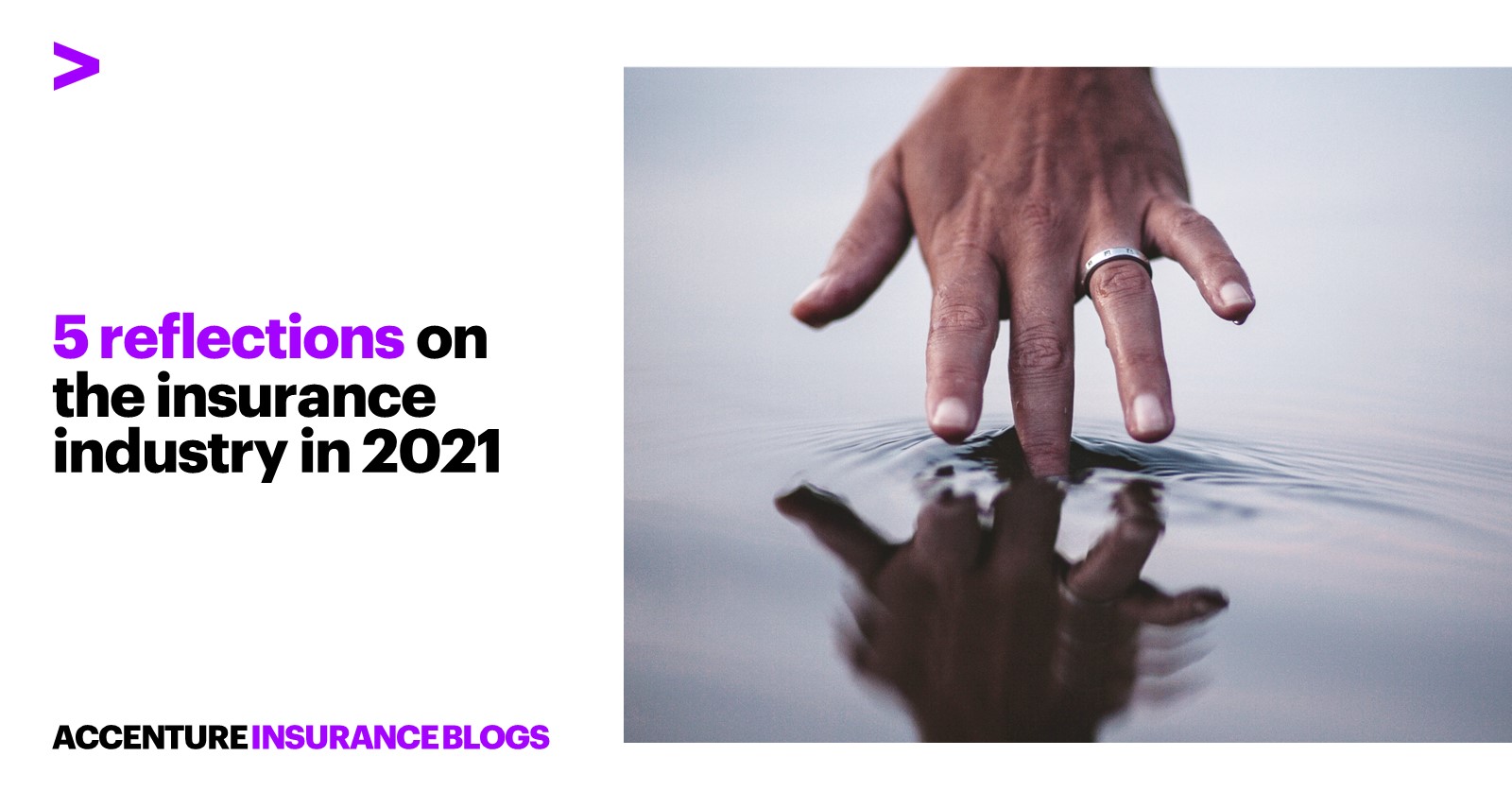5 reflections on the insurance industry in 2021

As we wrap up 2021, it seems appropriate to revisit predictions we made for the insurance industry this year. I put forward my hypotheses last December in my post, 5 predictions for the insurance industry in 2021. Let’s see how those predictions held up.
1. New risk models, shifting capacity, new products & pricing
2021 was a year of economic recovery, but uncertainty remains. In addition to peaks and troughs in COVID-19 infection, persistent supply chain disruption, and inflation, insurers face new loss patterns in property (as catastrophic losses linked to climate change seem to be). These conditions combine to challenge insurers as they determine which lines of business are likely to offer competitive advantage long-term.
While insurers were pulling all the levers of financial resilience in 2021, pricing is the lever that got the most attention. We saw this especially in commercial P&C lines in which insurers increased prices in response to both increasing cyber and climate risk. In personal lines, homeowners insurance rates also rose in response to catastrophic losses.
As predicted, we saw changes in risk models, such as new industry risk models for cyber and FEMA’s new pricing methodology for the National Flood Insurance Program. We also saw increasingly targeted usage-based insurance models, including a product for light aircraft pilots who want coverage by the week or day. These shifts are indicative of the industry dynamics pressuring capacity and return on equity.
2. Cyber is everywhere
In 2021 we also saw expanded cyber offerings in personal lines and group and voluntary benefits. These products include coverages for new threats like ransomware and can be more available and tailored to individual risk profiles.
In Accenture’s State of Cybersecurity Resilience 2021 report, executives from businesses across 23 industries with revenues of $1 billion or more say cyber-attacks on their organizations increased 31% since 2020. The respondents also estimate the associated costs over the past 12 months in their organizations to be $1.3 million. The vast majority (95%) of respondents say their organizations use cyber insurance, and most say they have filed claims for ransomware (57%), business interruption (56%), malicious internal actions (56%), phishing (48%), or denial of service (31%).
Take-up rates for cyber insurance among small and mid-size businesses lag those of larger enterprises. Carriers are rolling back capacity and focusing on more established and profitable segments, leaving cyber insurance for small businesses open to new market entrants.
Cyber Insurance is now at an inflection point and poised for rapid growth. Discover more in our latest report Cyber Insurance: A profitable path to growth.
LEARN MORE
3. The digital distribution game is more complex
Although the pandemic forced a rapid shift to digital channels, it did not come down to competition for the best direct-to-customer distribution channel. Human connection matters more than ever as customer trust falls. We saw in our Insurance Consumer Study 2021 that the right Human + Machine mix restores consumer trust and better engages them.
Though approaches will vary, the Human + Machine combinations will continue to be essential for incumbents and insurtechs alike. For example, Germany-based Wefox relies on agents and brokers in distribution and finds efficiencies in automating nearly 80% of administrative processes.
4. The industry is getting real about inclusion and diversity
The evidence of disproportionate impacts of the pandemic on women in insurance and the growing influence of social movements like Black Lives Matter have left an indelible mark on the industry. Almost one in three (32%) women working in insurance left their jobs temporarily or permanently during the pandemic, and 30% of those who stayed at their jobs are considering leaving. Insurers are responding with initiatives to address the gender gap in the insurance workforce and with clear targets to increase workforce diversity. However, those goals appear loftier as competition for talent (diverse or not) intensifies in many markets.
5. Insurers reach for ecosystem solutions in wellness
The pandemic sparked demand for telemedicine visits and other digital health services that many consumers have now come to expect. We are seeing innovations in connected and IoT devices that create new revenue streams with many new opportunities in fitness and wellness.
Health & wellness brands iFit and Headspace were among the 50 Top Brands for Millennials in 2021, but it was Peloton that took No. 1. Their home-exercise equipment and classes are a Millennial favorite. And Peloton is using their brand value to increase subscriptions through partnerships in corporate wellness plans.
While the tech learning curve for Millennial and Gen Z consumers is short, insurers and their adjacent industry partners cannot afford to overlook the opportunities and needs of less digitally savvy segments. The World Economic Forum is advocating for measures of emerging risks from misinformation, cyber-crime, safety, and privacy concerns to help increase digital inclusion across generations.
Looking ahead to 2022
As we move into the holidays it will be time to consider what lies ahead in the new year. I look forward to sharing those predictions and hearing yours.
Get the latest blogs delivered straight to your inbox.



